If you are looking to incorporate different types of evergreen trees into your landscaping, then you should know a few things first. The first thing to know is that the foliage of an evergreen will not shed during the year. Also, when we are referring to different types of evergreen trees it means their leaves will grow continuously regardless of them falling off. Because of this, the trees used as a Christmas tree or pine tree are often thought of.
28 Gorgeous Types of Evergreen Trees
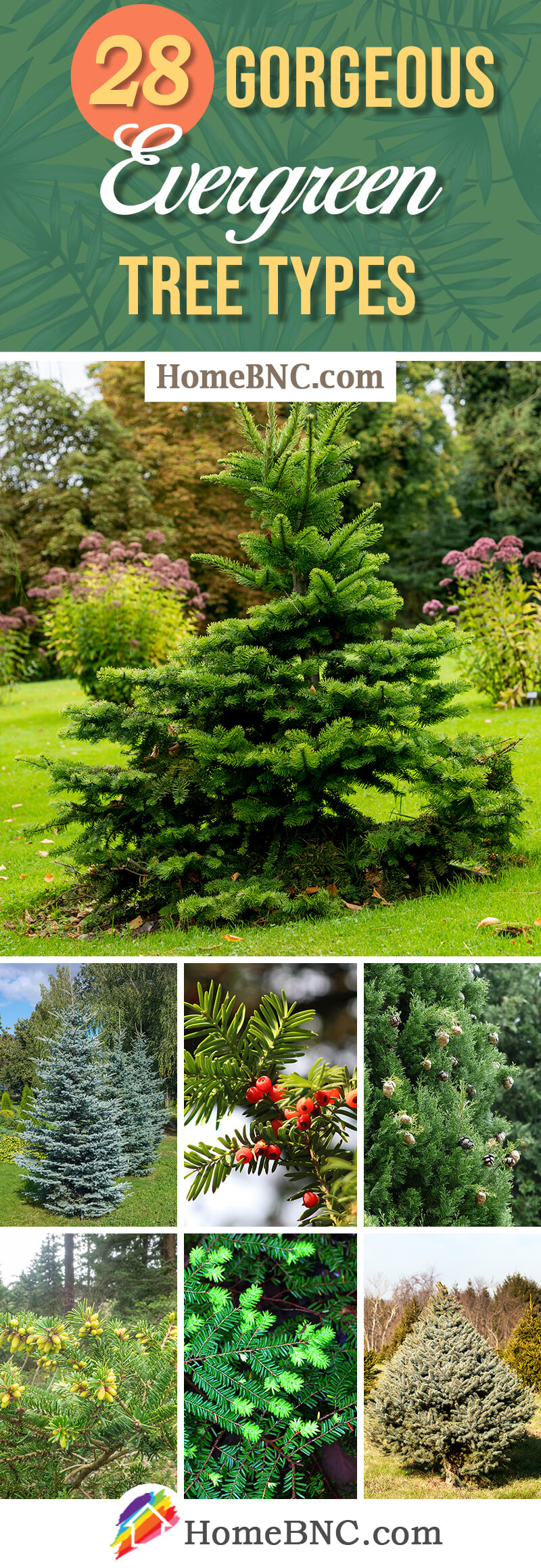
Regardless, the types of evergreen trees can also be a tree that is able to withstand cold or hot weather and maintain its green color. Plus, many options of evergreens exist and we put a guide together that shows you everything to know.
Key Takeaways
- An evergreen can have an average height of more than 60 feet
- The evergreen can be commonly found in the Pacific Northwest
- The evergreen needles can be as long as 18-inches in length
- Cones keep the seeds protected
An evergreen tree comes in many species and families. The first evergreen that is easily recognized is the pine tree and is a conifer subcategory. The pine tree has leaves in the shape of needles and its timber is soft. Below are a few of the most commonly known pines.
1. The Eastern White Pine (Pinus Strobus)
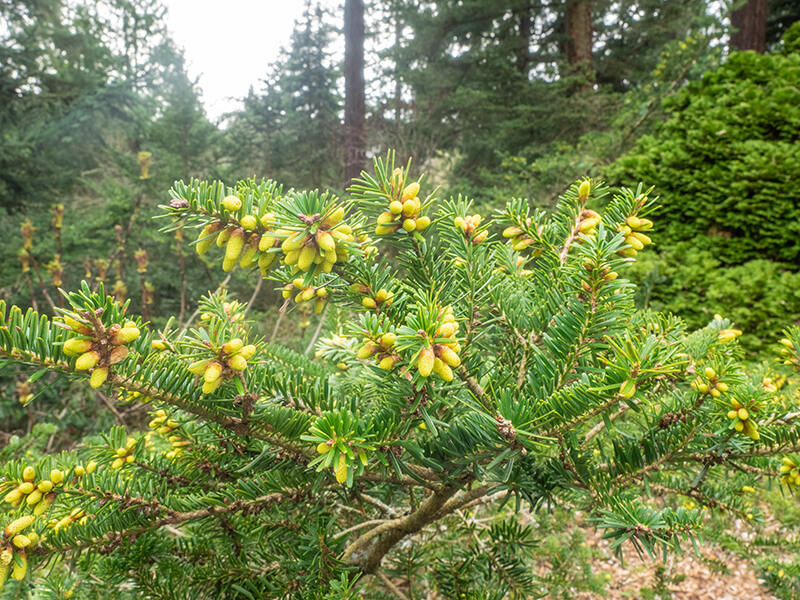
Native to the east coast of the United States, the eastern white pine’s region was once home to Native Americans and was referred to as the Tree of Peace. Besides their large size, the White Pine is able to live for hundreds of years. In fact, there are White Pines today that are as old as 200 years old.
These types of evergreens are known as gymnosperms and can grow at least 50 feet tall and 25 feet wide. Its pine needles are slender and can be 5 inches long. The needles have a blue tinge, are soft, and form in a cluster.
2. The Ponderosa Pine (Pinus Ponderosa)
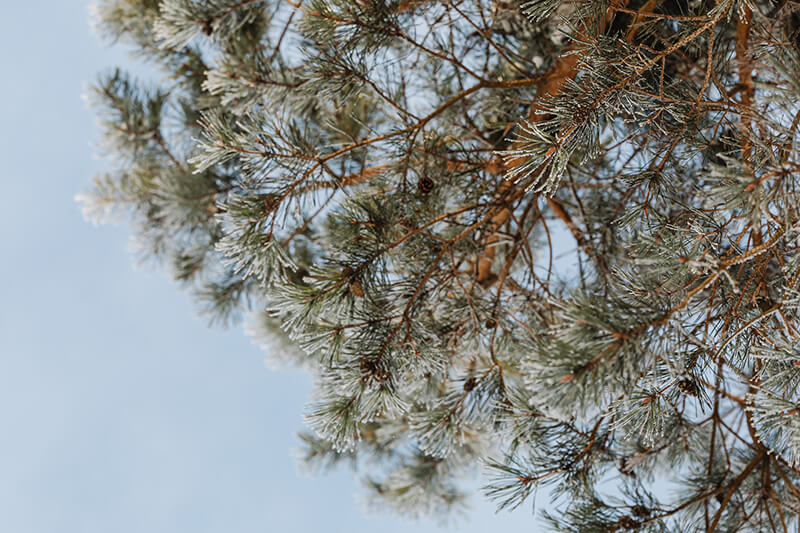
This pine is another large conifer that can reach 125 feet and have a width of at least 25 feet. Similar to pinyon pine, its shape is conical in appearance. This timber is dominant throughout the west. Its needles are a greenish-yellow and are formed in bundles. With oval cones, they can be as long as 6 inches. The young trees have a brown bark that is dark. When the tree reaches maturity, its bark turns color and includes plates that appear scaly. Its scent is similar to turpentine or resin once a needle, bark, or stem is crushed.
3. The Sugar Pine (Pinus Lambertiana)
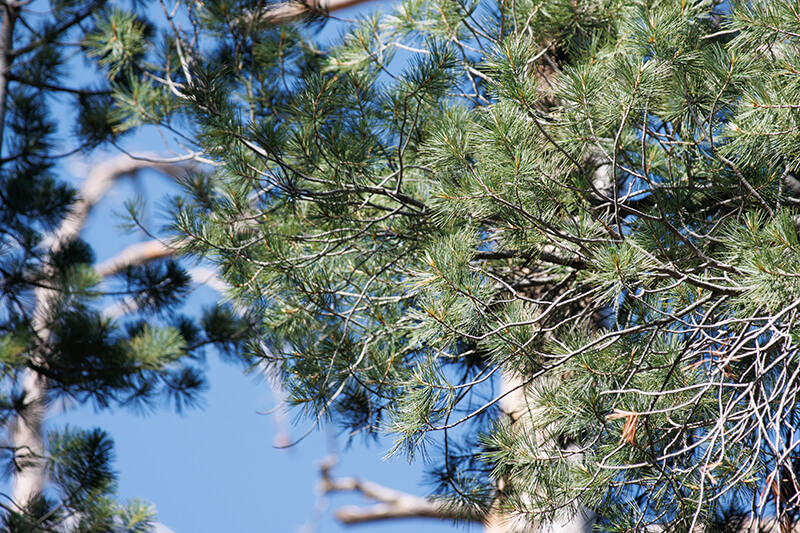
As a large pine, the Sugar Pine branches flow downward because of their heavy pine cones. Its roots grow deep and its foliage is always noticeable.
Normally, the sugar pine can reach a height of 150 feet and others can reach more than 250 feet. As the tree matures, its trunk turns cinnamon-red and easily reaches a width of 10 feet. Its needles can be 3 inches long and are in clusters. The notable feature commonly seen are the cones that can be 20 inches long. The average length can be 12 inches and as wide as 6 inches. The seeds are inside of the cone once the cone matures with their weight being a few pounds.
4. The Red Pine (Pinus Resinosa)
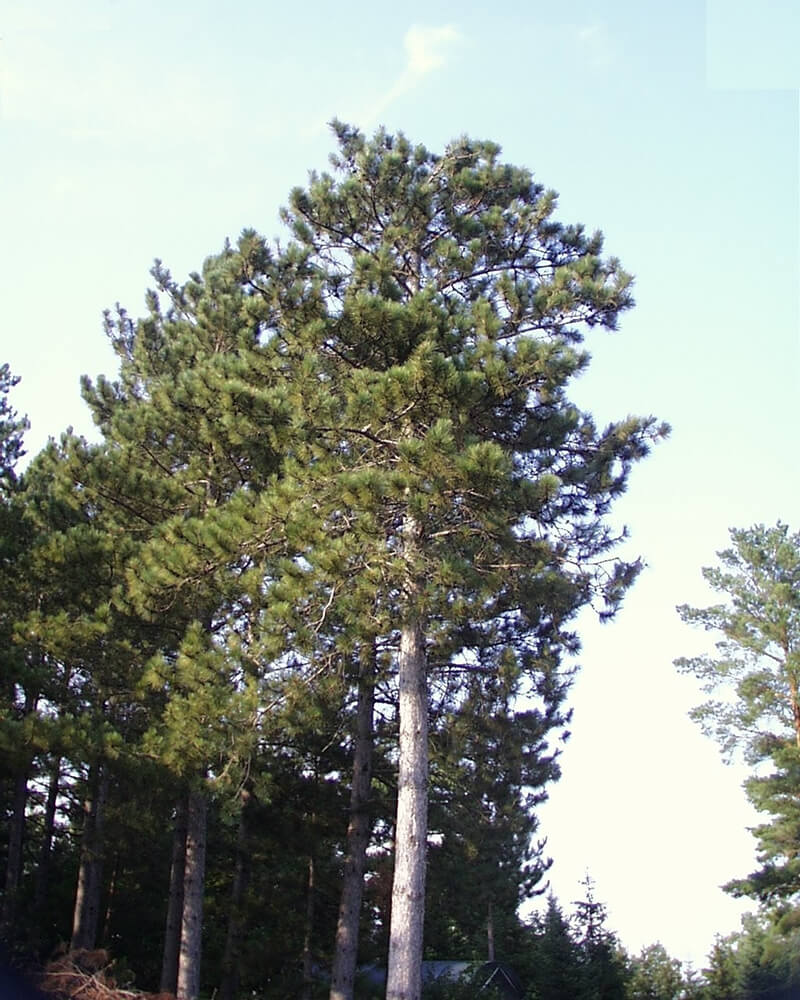
The Red Pine can reach a mature height of more than 115 feet tall and forms a trunk that is straight and a crown that is narrow and conical. Its bark is reddish and has a surface that is flaky. The Red Pine branches ascend and spread out wide. The branches are also curved. The Red Pine is able to self-prune as the bottom branches detach naturally. The branch pine trees tips consist of leaves that are in the shape of needles. The needle leaves can be a length of at least 4 inches. When a leaf is broken, it will break towards the center and in a clean manner.
5. Eastern Hemlock (Tsuga Canadensis)
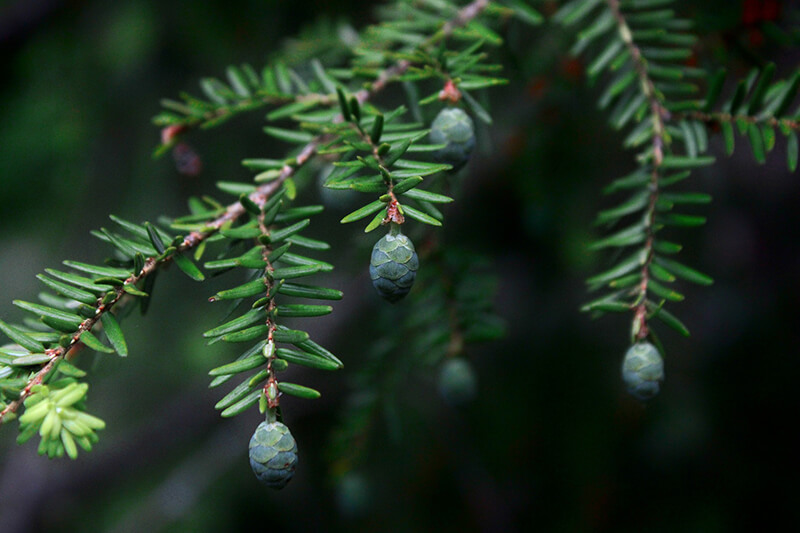
As a woody evergreen, the eastern hemlock is found throughout the eastern part of the US. It can be found in mountain areas. The soil needs to have plenty of drainage and moisture. There needs to be plenty of sun. The eastern hemlock conical shape is beautiful and has branches that droop with cones. Having a healthy tree makes the perfect addition to any landscape. The evergreen is able to reach a height of at least 40 feet and a width of more than 25 feet. To get the most for your home garden, it is best to incorporate a dwarf cultivar.
6. Western Hemlock (Tsuga Heterophylla)
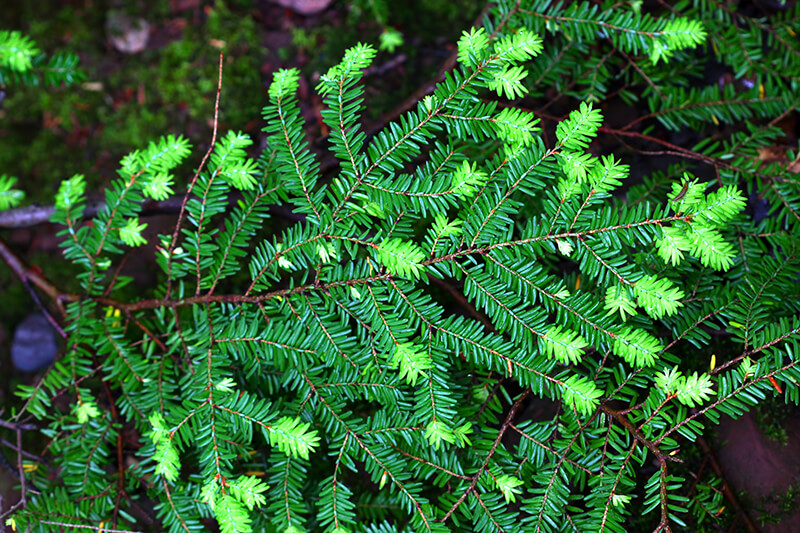
A western hemlock consists of needles and a large base that can be more than 30 feet wide and a height that can reach close to 200 feet. It can include a diameter that stretches to as much as 9 feet. Its habit is pyramidal, erect, and broad, and with a crown that is conical. The lengths of the needles can vary and the colors range among green colors. Its seeds are brown and readily abundant.
Many may get confused between the western and eastern hemlock, but the difference can be found in the size of the needles and the way they are arranged. You will also notice a significant difference in the band size and the buds shape.
7. The Mountain Hemlock (Tsuga Mertensiana)
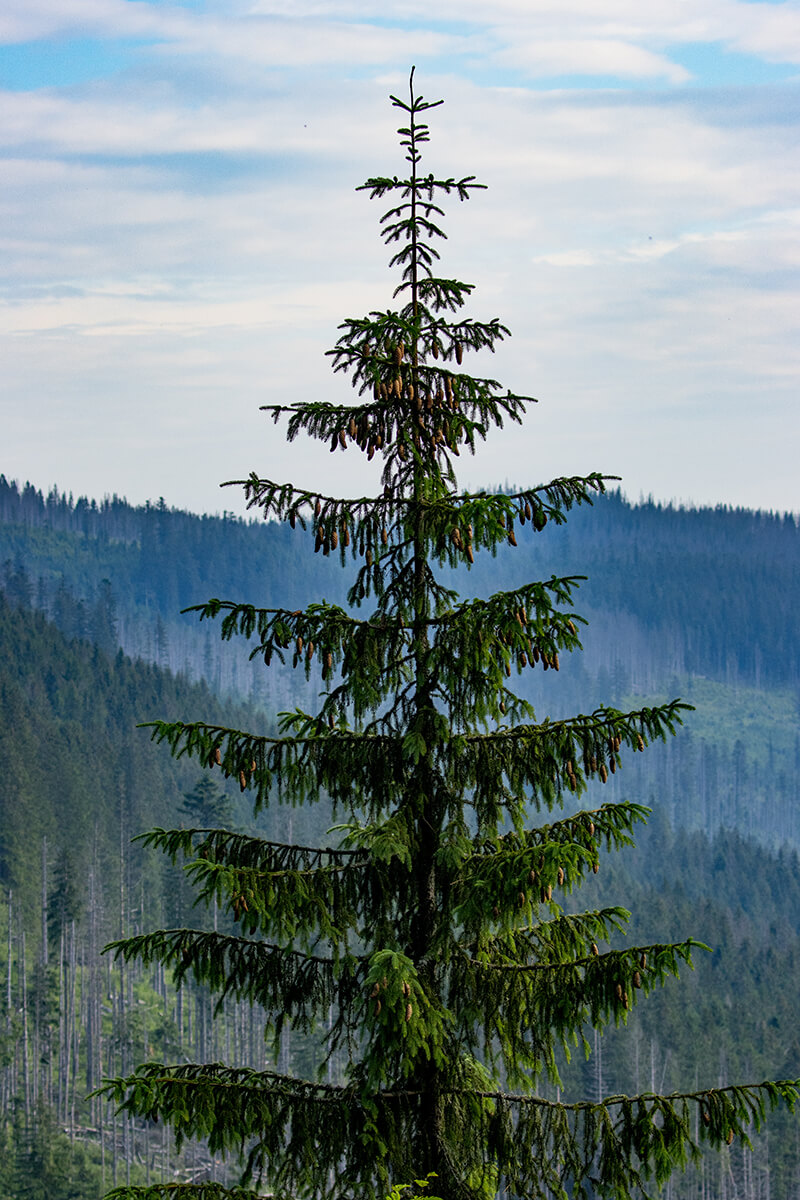
This evergreen includes needles that are medium size and a width that is narrow. It can mature once it reaches its max height of 100 feet. Its crown is conical, its branches spread out, and has foliage that is dense. The bark is darkish-brown and scaly. It contains purple cone seeds that lighten.
You can find the mountain hemlock all throughout the Pacific Northwest, British Columbia, and Alaska. It can also be found in higher elevations and when it lives in a subalpine region, their height may only reach 10 feet, but in a lowland, it may be more than 100 feet tall.
8. The Mediterranean Cypress (Cupressus Sempervirens)
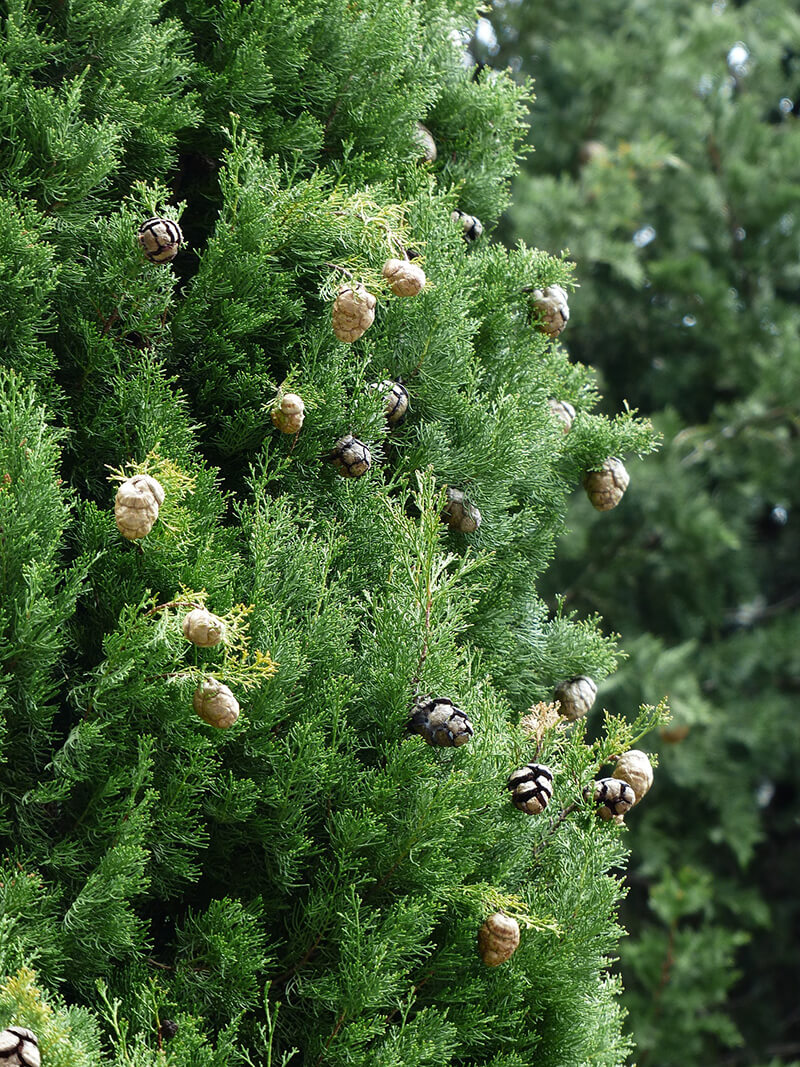
The mediterranean cypress needles are blueish-green and tall. It is native to locations that are mountainous and rocky or close to the coast. Many of the shapes are columnar and are located in a domestic setting. When the cypress matures, its rate of growth will stop.
The mediterranean cypress easily tolerates drought while it ages, and the young cypress needs to have an ample amount of water. In order for its habit to remain columnar, it will require pruning. With pruning, there will be very little maintenance while in your landscape. When it needs to be transplanted, it is a good idea to do this in either April or September.while the roots are growing actively.
9. The Bald Cypress (Taxodium Distichum)

This evergreen is deciduous, hardy and bears plenty of cones. It can grow to more than 70 feet tall and as wide as 25 feet. The older version of the bald cypress has a base that is wide and spreads and becomes narrow as you make your way up with a 6 foot diameter.
When a bald cypress is young, its habit is pyramidal, while older trees are flat on the top. The bald cypress can live a long life and many of them have gone through climate change and survived.. It can be found along the coast and swamps and along many water sources.
10. The Nootka Cypress (Callitropsis Nootkatensis)
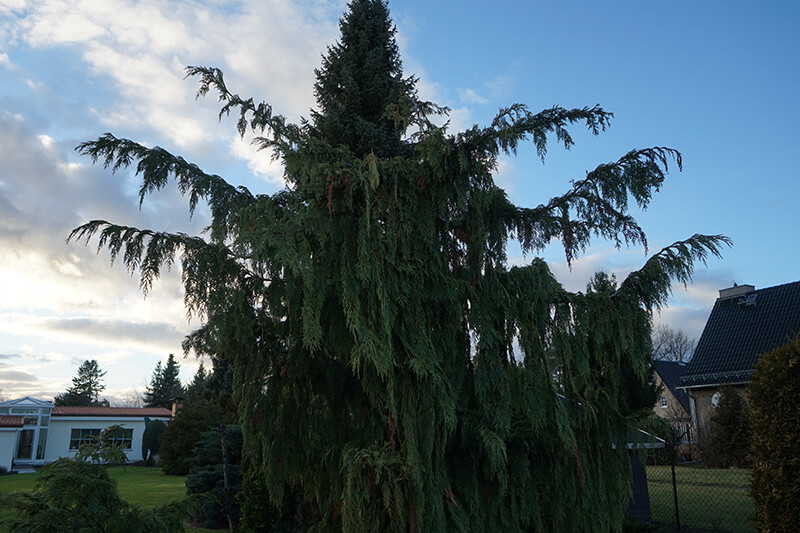
As an evergreen, the nootka cypress can be found throughout the pacific northwest and is known to grow along ravines, streams and anywhere the soil is moist. Its branches are pendulous that sweeps up with sprays that are flattened. Its foliage is greenish-blue and grows at a slow rate that can eventually reach more than 40 feet with a width of 15 feet.Not only that, but when conditions are good, it can experience rapid growth, which can be at a yearly rate of one foot. In the wild, the nootka cypress can be 90 feet tall.
11. The Monterey Cypress (Hesperocyparis Macrocarpa)
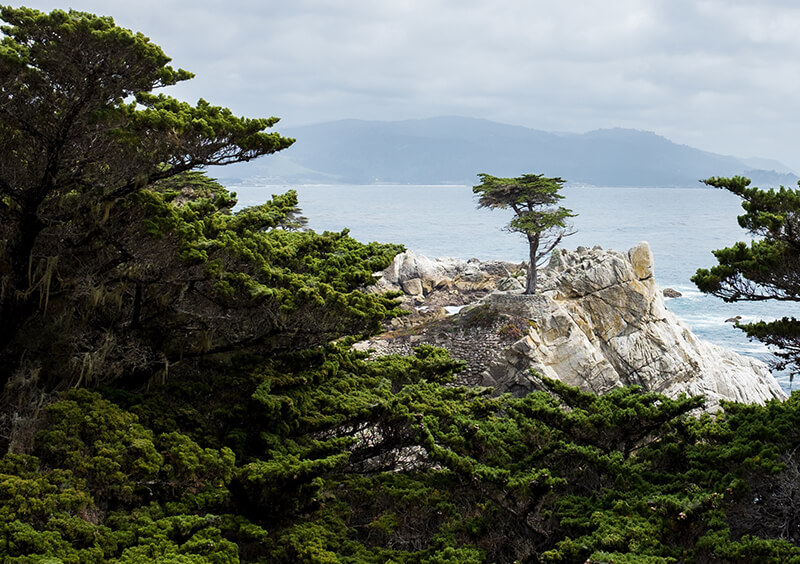
The monterey cypress prospers among areas along the coast, where the salt sprays and wind can make it unbearable for other trees. However, the huge amount of sculpting that is done makes it achieve a picturesque outcome that the cypress is known for. With a growth pattern that is contorted, it is reminiscent of many tree varieties found within the timberline.
As a young cypress, it can grow fast and become pyramidal and narrow. As it grows over time, it can become flat on the top and spread broadly. It can reach a height of 90 feet and a 70 foot canopy. Its trunk can reach a diameter of more than 6 feet. Because of its hardiness, the monterey cypress can live for more than 300 years.
12. The White Fir (Abies Procera)
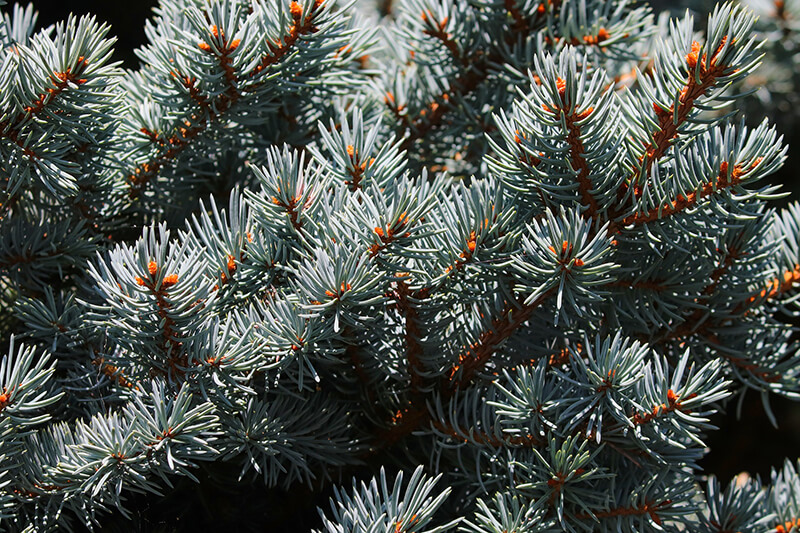
Often referred to as Noble Fir or Red Fir, the White Fir has many open layers. Due to their distinct shape and growth, the white fir is a great tree for Christmas. The white fir also consists of needles that are grayish-blue and bark that is silverish-gray. The white fir’s cones can also grow to at least five inches in length.You will find the white fir native to the northwest and can easily reach a height of 50 feet, with many becoming 300 feet tall or more.
13. Hemlock Trees: The Douglas Fir (Pseudotsuga Menziesii)
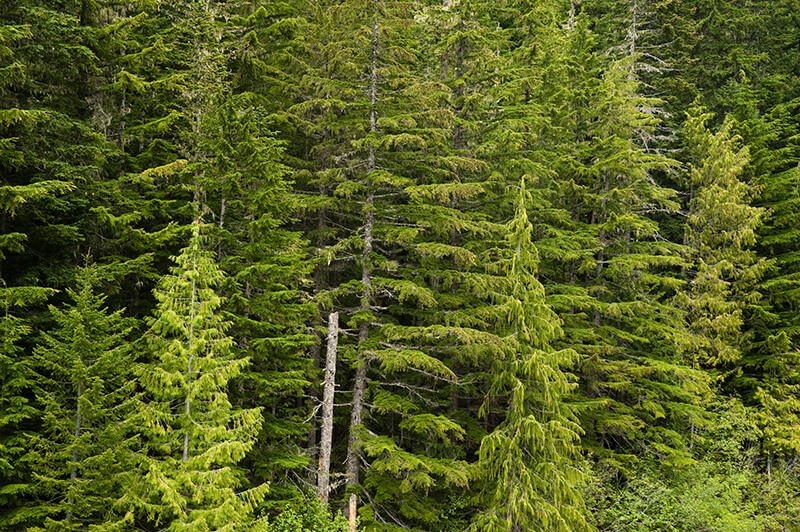
A Douglas Fir is an evergreen pine and is native to the west coast. The Douglas Fir is made up of three fir varieties. These varieties include the Mexican Douglas Fir, Coast Douglas Fir, and the Rocky Mountain Douglas Fir. Though the tree is associated with Fir, it is commonly referred to as false hemlocks. It contains bracts made of forked cones that make it unique as compared to other firs such as pinyon pine. Its cones can grow to a length of 4 inches or longer and droop. With green fir needles, they can reach a length close to 1 ½ inches with a white band underneath. When the needles are crushed, they will have a high amount of fragrance.
14. The Fraser Fir Trees (Abies Fraseri)
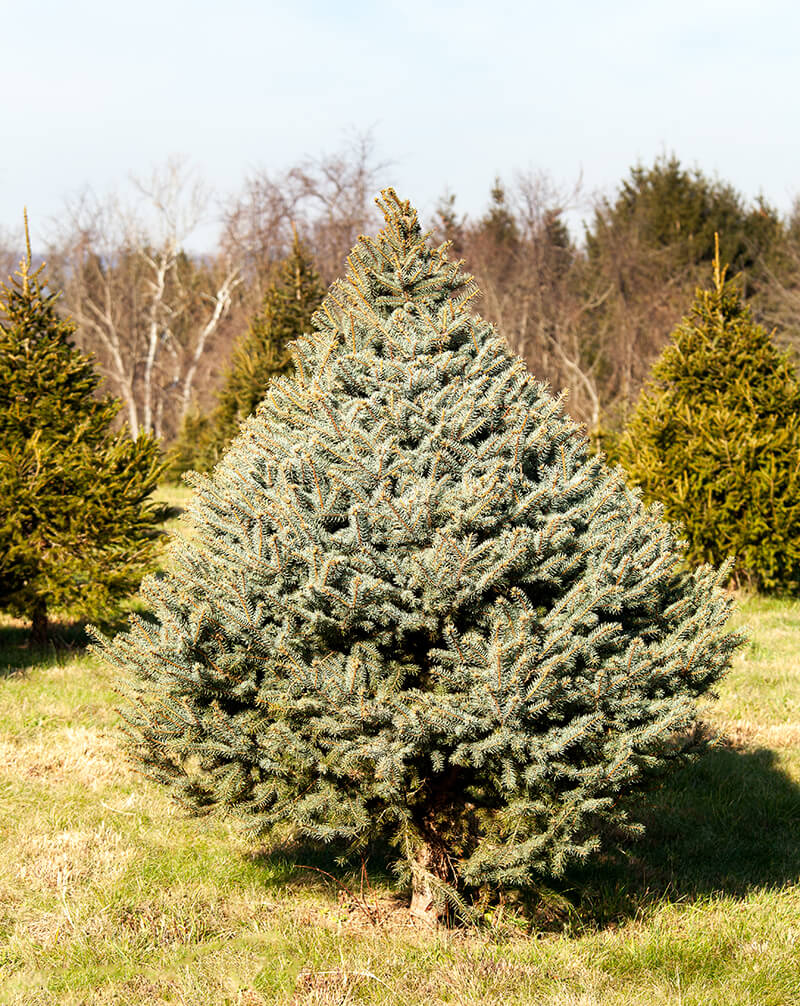
This fir trees species can be found within the Appalachian Mountains . Oftentimes, the Fraser Fir will be referred to as a Balsam Fir. Its narrow shape is conical while it is young and can grow to more than 50 feet and a thick trunk that can be more than 2 feet. It is another popular Christmas tree option and is often farmed for such purposes. The fraser fir has fragrant needles that can last. You can find the Fraser Fir in many recreational areas and gardens.
15. The Balsam Fir Trees (Abies Balsamea)
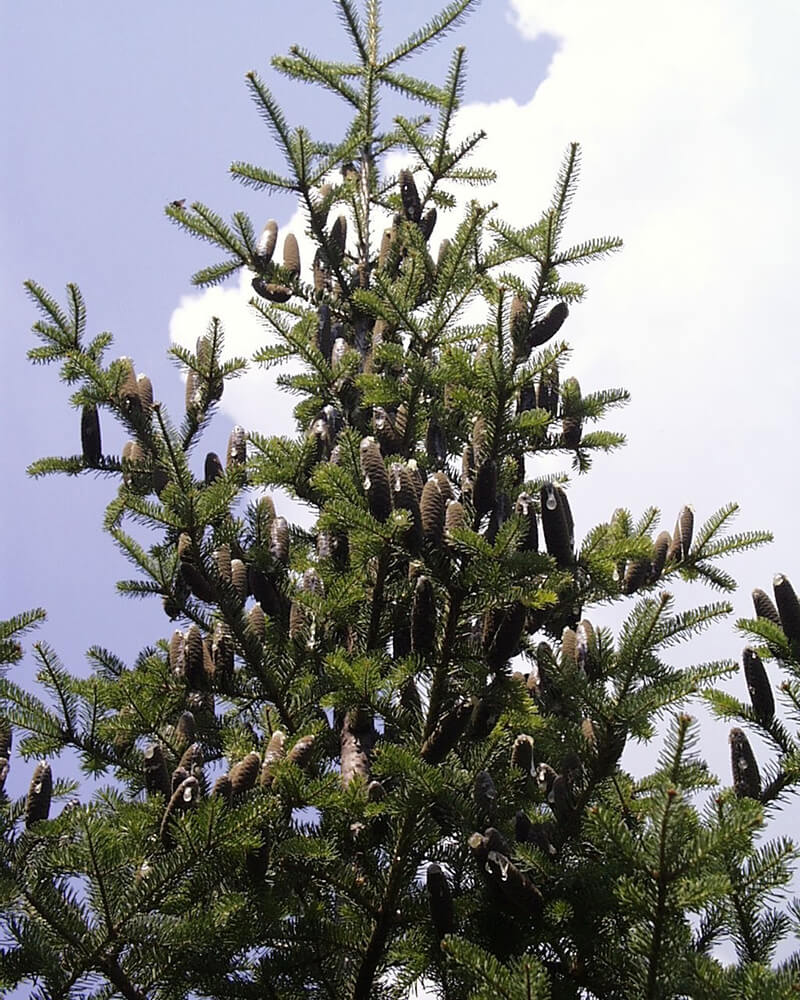
With a wide range, the Balsam Fir can be found all the way from Alberta and as far south as Pennsylvania. The Balsam Fir is not good for summers that are humid or hot due to its cooler native area. When growing, it needs to have soil that is acidic, moist, and well-draining. When you crush the Balsams needles, they release an aroma and there is plenty of sap that the bark and cones produce. The shape of the Balsam ranges from conical to a narrow, symmetrical crown. A characteristic of this fir tree is its upright cones. The needles offer a structure that provides durability that will last during cold months.
16. Grand Fir (Abies Grandis)
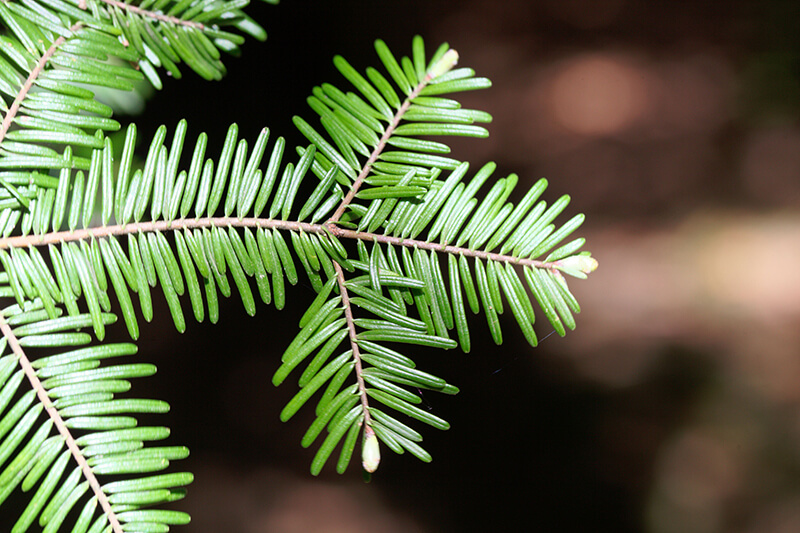
The evergreen Grand Fir tree is a Pacific Northwest native that grows in high altitudes. It is considered a pine and is included in 2 different types that grow at varying altitudes. The tallest of the two grows along the coast. Your landscaping will enjoy a large tree and works perfectly for being naturalized into the area. It provides a nice fragrance and can be used as a Christmas tree. Many species of wildlife make the Grand Fir tree their home and it is used often as a place to nest, for coverage, or as a food source by a variety of animals and birds.
17. The Norway Spruce (Picea Abies)
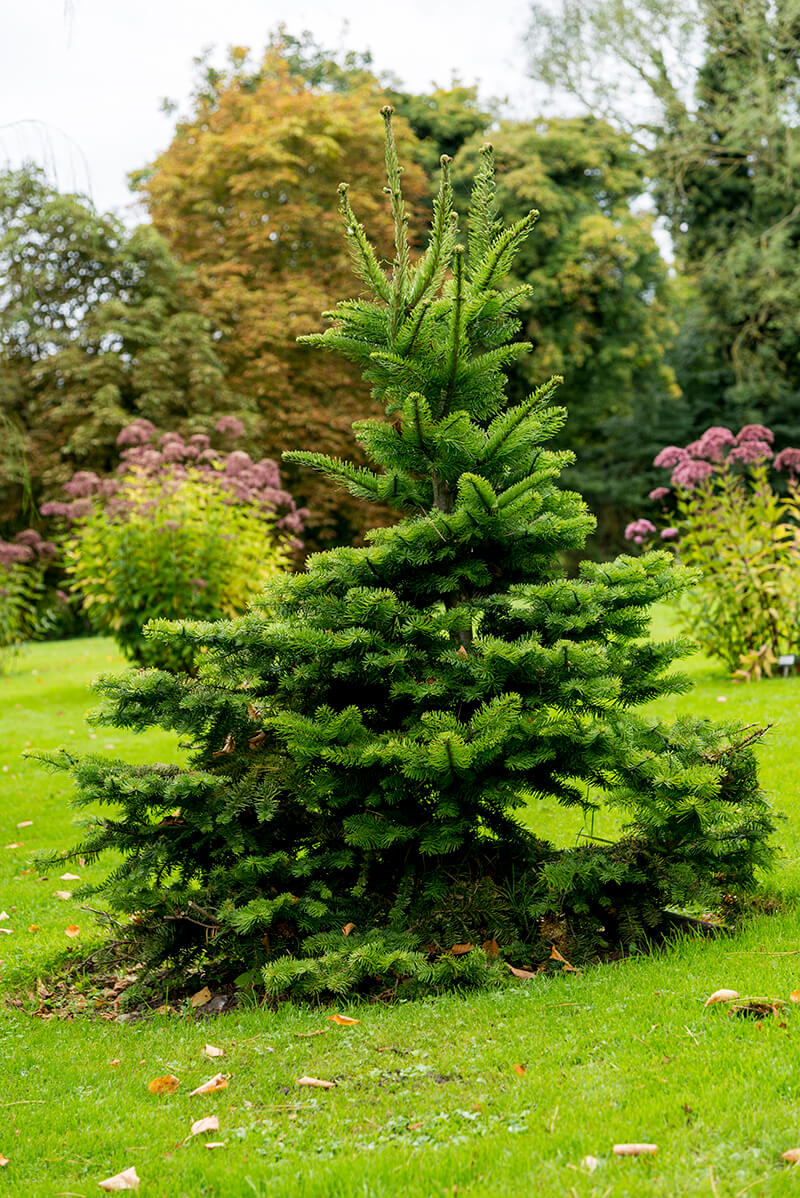
This evergreen can be 60 feet tall with a width of 30 feet. It is medium-sized with a habit that is conical and pyramidal with branches that droop. The form it grows as a juvenile has branches that spread out, and branchlets that also droop. The bark of the Norway Spruce can be thin while young, but thickens as it matures and turns a brownish-gray. It has 1 inch green needles with four sides that are in a row.When the cones mature, they become silver in color and can be as long as 6 inches.
18. Colorado Blue Spruce (Picea Pungens)
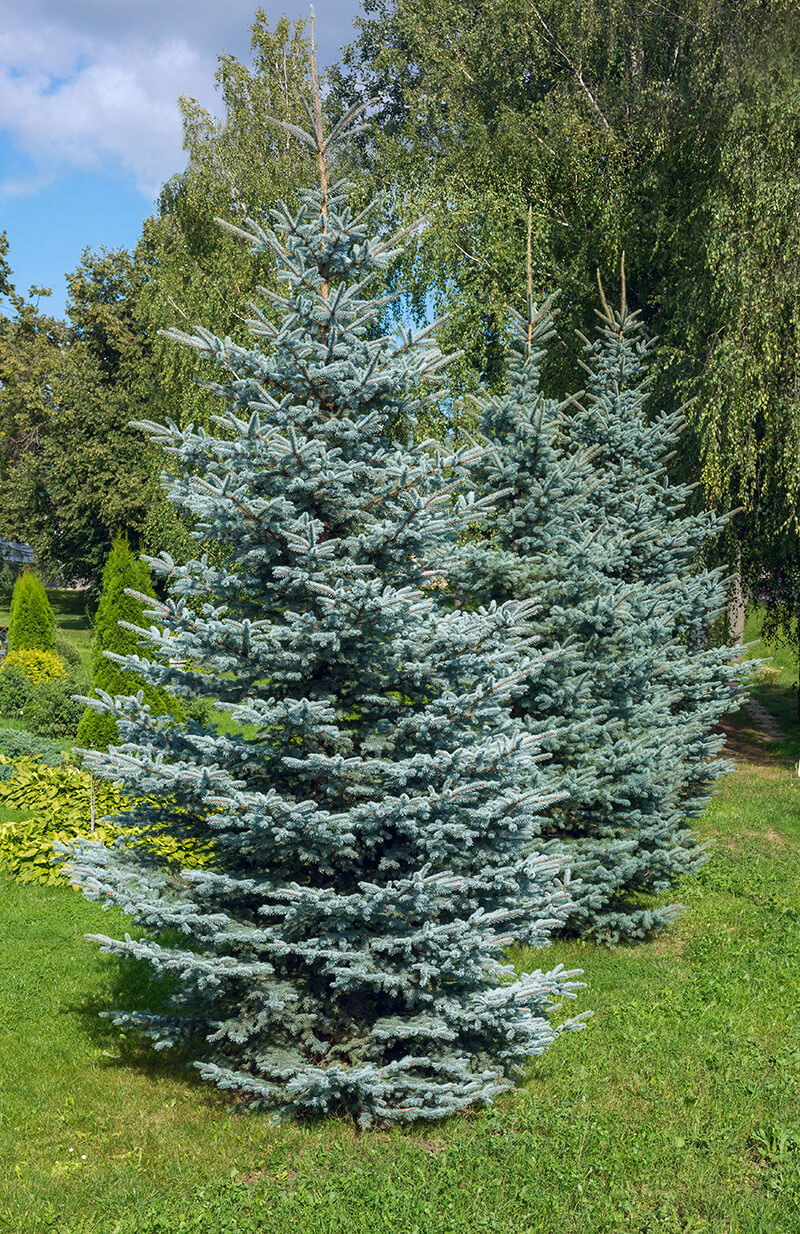
This evergreen is a dense variety that can become quite large. Its habit is pyramidal and has needles that are between silvery and bluish-green, and have branches that are horizontal. The Colorado Blue Spruce is used often as an ornamental tree due to its appearance and color. Its height can reach 60 feet with a width of 20 feet. It can be incorporated as an accent and serves as a great shield against wind. Its needles are curved, stiff, and can be as long as 1 inch. The cones resemble a cylindrical shape as it matures.
19. The Black Spruce (Picea Mariana)
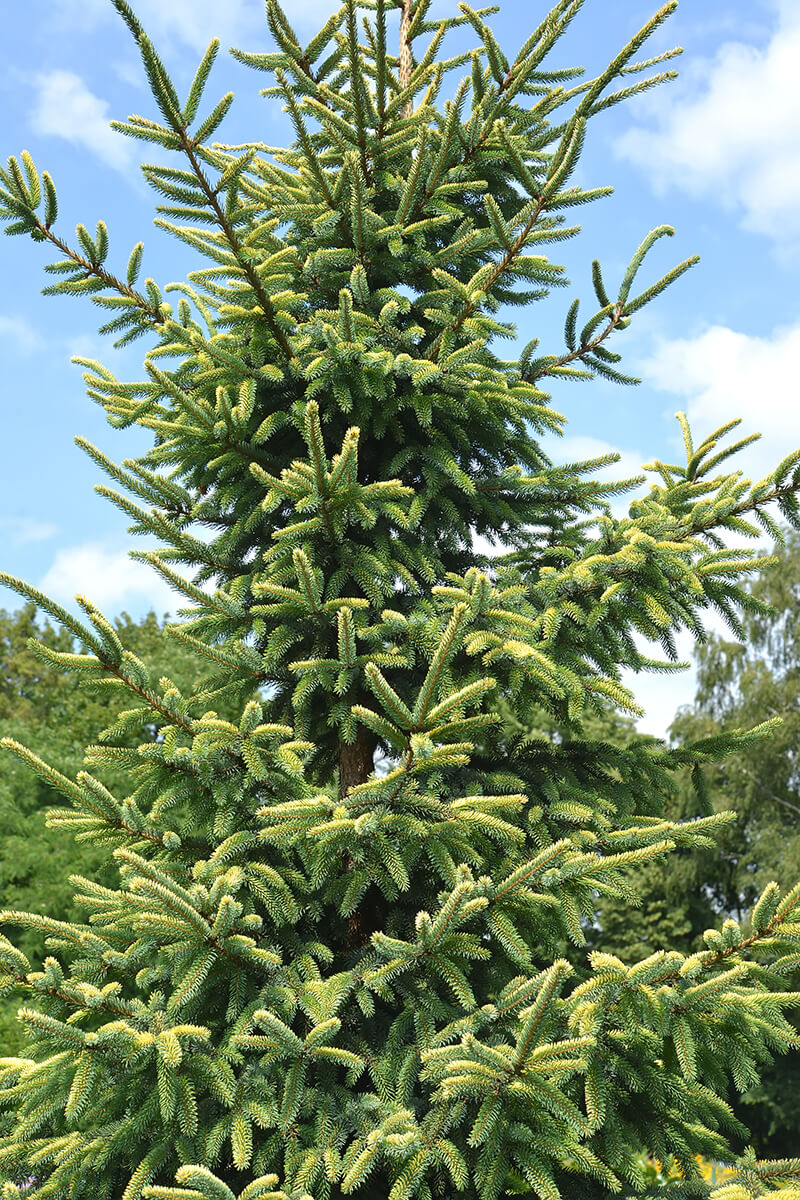
A Black Spruce has a conical shape that tapers. Its ideal climate and hardiness zone is cool and thrives in soil that is moist. You will find the Black Spruce used a lot to create paper with its pulp. This evergreen can be found all throughout North America and Canada but mostly in the north. Its branches descend and have needles that are dark and a mix of blue and green, with ends that are upturned.The limbs on the bottom provide a sweeping motion. It tolerates a soil that is wet and a climate that is cold.
20. The Giant Sequoia (Sequoiadendron Giganteum)
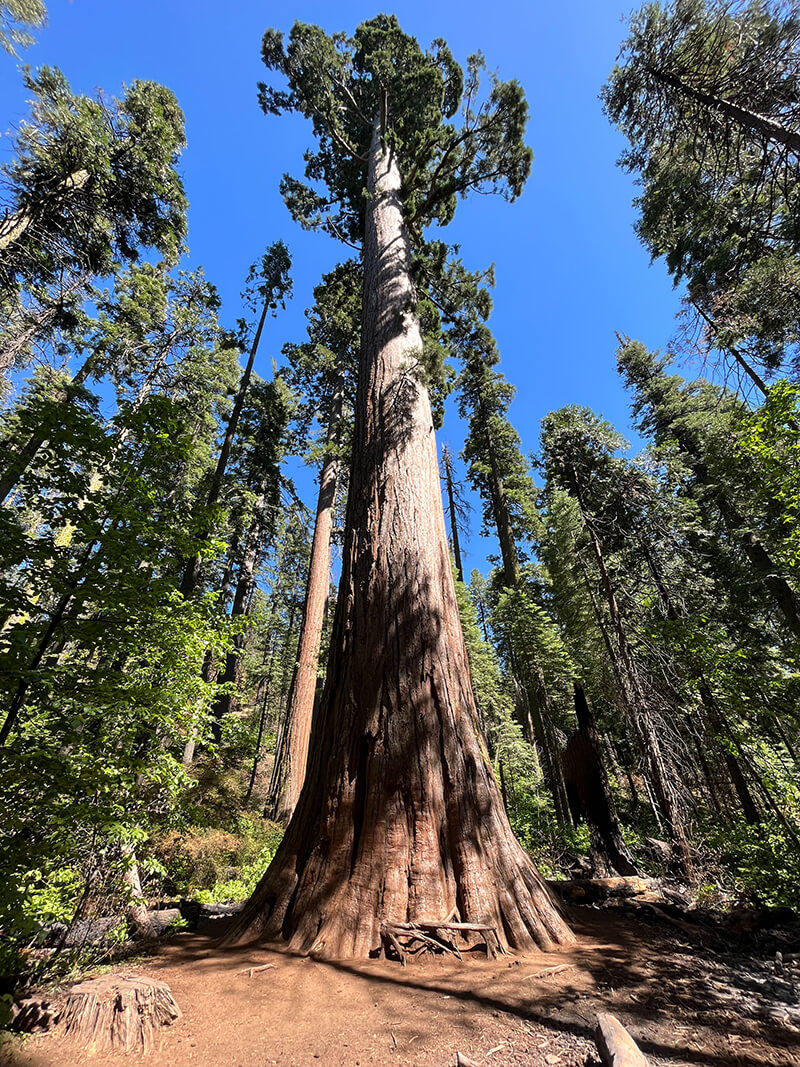
This large tree has an orange color that is distinct and involves a red tone that is dark. Frequently, its primary branches will not extend out until they have reached a tall height. The Sequoia can grow fast as well as reach a tremendous height without taking thousands of years to mature. Many Sequoia’s are considered to be ancient, however not as old as many others. Regardless, this evergreen can be thousands of years old.
21. The Coast Redwood (Sequoia Sempervirens)
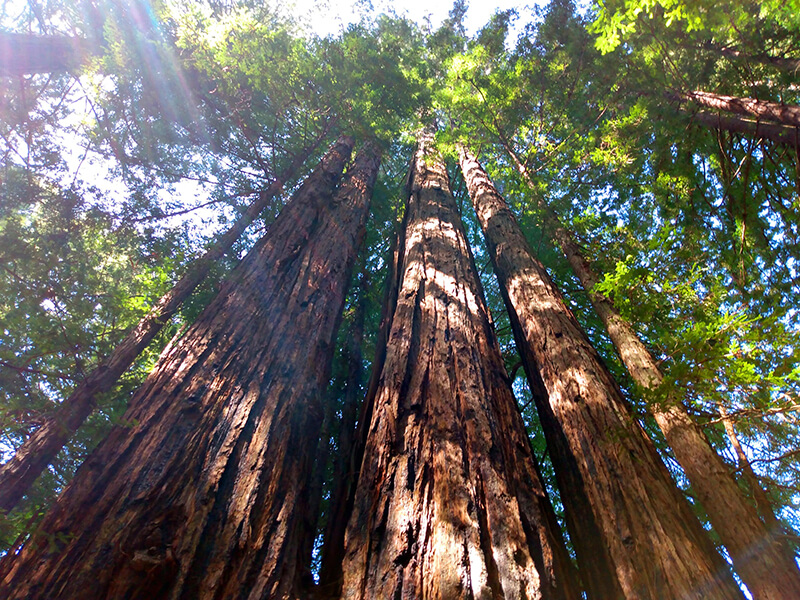
Another tall tree that lives for a long time is the Coast Redwood. This species of evergreen can be 380 feet tall. This redwood’s trunk bursts up from the base and has branches that are shaped horizontally and pyramidal as a young tree. As aging of the tree takes place, its lower branches are lost and become conical in shape. The Redwood can grow fast and averages a yearly growth rate of 3 feet. You will find the Redwood protected in many state and national parks such as the Redwood National Park.
22. The Common Yew / European Yew (Taxus Baccata)

The Common Yew is what you will find throughout its growth area. It is good to remember that the Yew are types of evergreen plants that are very poisonous and poisoning can occur through the skin and inhalation if the toxin is released. Its shape is conical and as a shrub or tree it can easily reach a height of 60 feet. Its branches are dense, spread out, and have green needles. Although it is a conifer, only the male Yew includes cones that do not bear seeds. The female Yew has fruit that is a scarlet red with its seeds covered with arils.
23. Hemlock Trees: The Pacific Yew (Taxus Brevifolia)
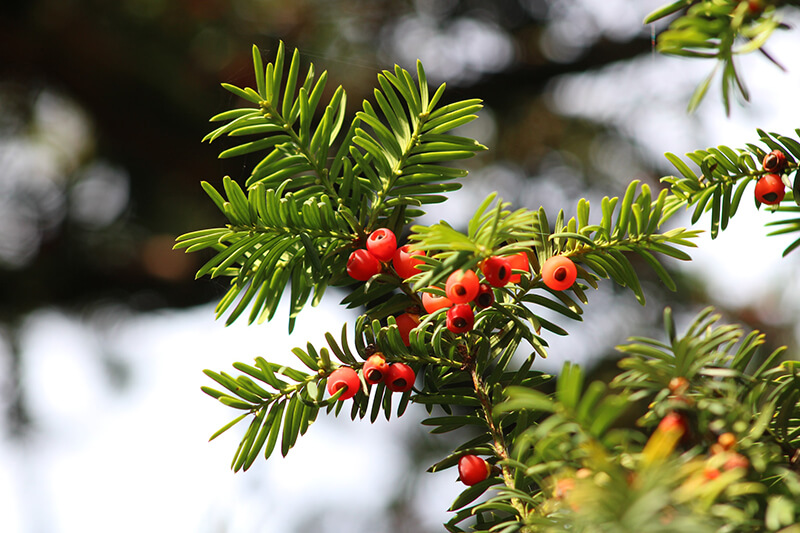
Another Pacific Northwest evergreen seen often is the Pacific Yew. It is normally within a ravine, a slope, stream banks, and forests.
It has a strong, hard timber and is not used heavily commercially. When it is used, it is to make wood paddles for canoes, wood handles, and wood posts. Lathing is accomplished easily and can be easily finished. Its durability made it the perfect wood to create bows and Native American Indians utilized it to create weapons and tools for hunting. Its leaves are needles and it bears fruit that is bright red. It can be found growing beneath a forest of maple, fir, and hemlock. You may also find lichens and moss covering it. The Pacific Yew is also poisonous if allowed to be consumed by animals.
24. The Canadian Yew (Taxus Canadensis)
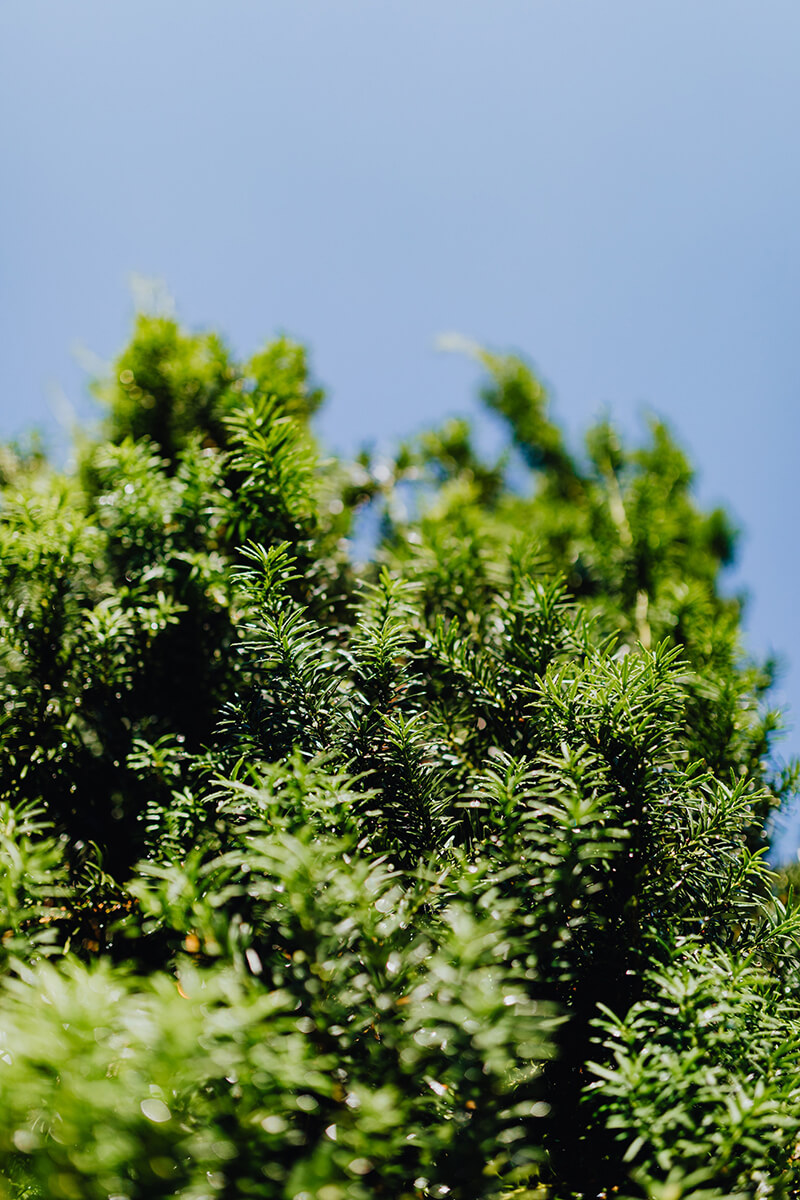
The Canadian Yew is often found in areas that are swampy, along lakes and streams, and ravines. It is also located in mountain areas within North Carolina. This evergreen likes shady areas best and soil that is cool and moist. The stems of the Canadian Yew can grow and become colonies if they touch the ground. Its height will not be taller than 5 feet. You can incorporate this Yew as ground coverage or to have soil stabilized along bogs, streams, and ponds.
25. Evergreen Species: The Tamarind (Tamarindus Indica)
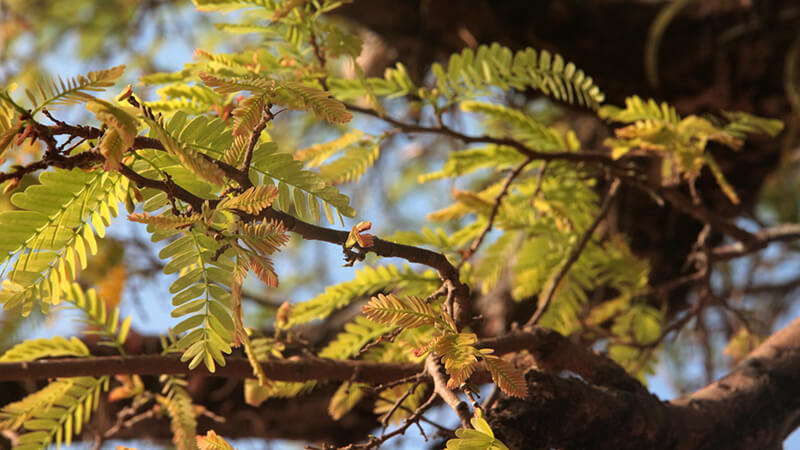
The Tamarind tree is an evergreen found in tropical regions and can reach a height of 65 feet or more. It is an original native of East Africa. Similarly to other tropical hardwoods, the trunk of the Tamarind is stout, short, and has a crown that spreads wide and branches that arch with leaflets that are a light green. In the summer, there are flower blooms that change color and droop. Eventually, it develops a pod filled with fruit that is similar to a bean. After ripening, the fruit becomes an edible pulp that is used within many culinary dishes. Although it has evergreen leaves, a dry climate will cause leaves to fall.
26. Evergreen Species: The Mahogany (Swietenia Mahagoni)
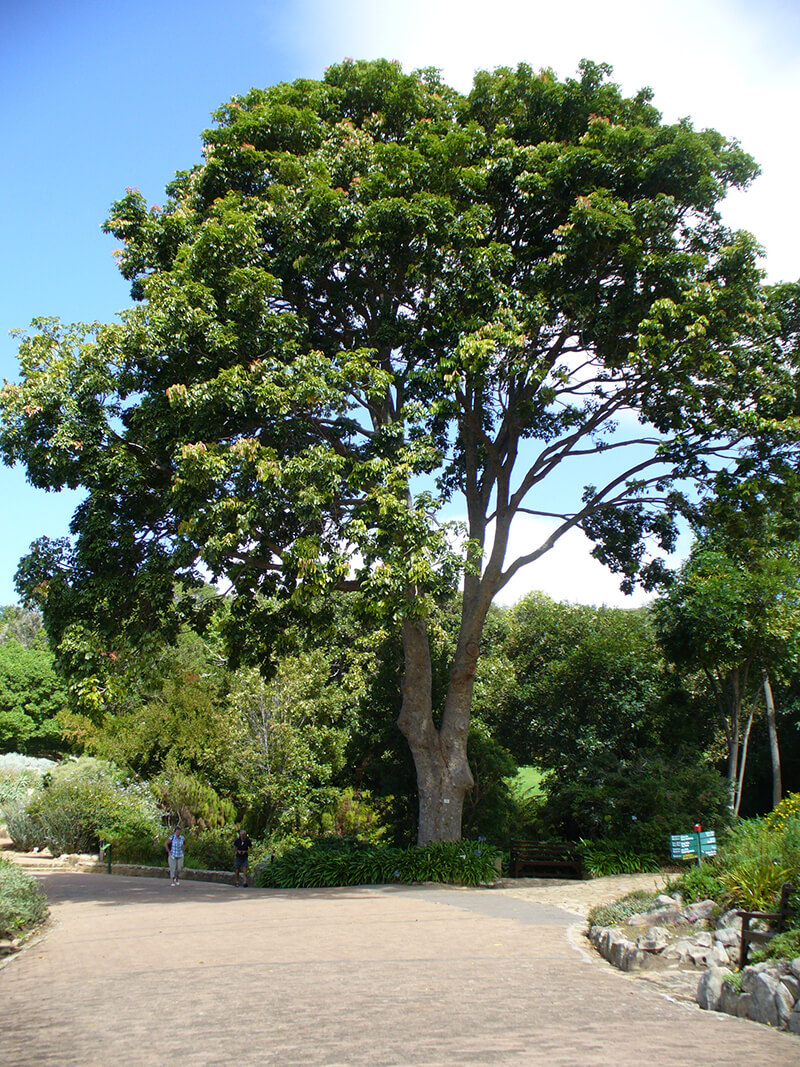
When growing a shade evergreen tree, the Mahogany will be used often. Their red straight grain is a distinct feature that makes them unique. They are native to tropical regions and the evergreen can grow tall. Its wood is hard and as it matures, the wood turns red. The Mahogany leaflets resemble feathers and have no leaflet as a terminal. Its flowers are white and form clusters. The fruit is woody and contains seeds that are winged and square. Tropical hardwoods like the Mahogany can reach a height of 75 feet and can include a spread of 50 feet. The wood is dense and can resist wind if it is trained properly for landscaping.
27. Evergreen Species: The Eucalyptus (Eucalyptus)
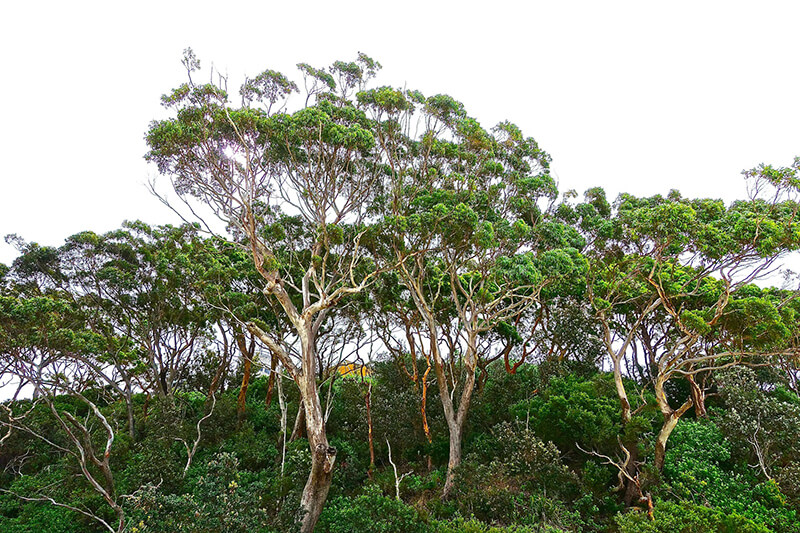
The Eucalyptus is an evergreen tree shrub that has stems that are modestly long. Its uses are as a small tree, woody shrub, or even known as one of the types of evergreen plants. It is highly tolerant to drought, but if in cold weather, it will die back. Poisoning can occur if a significant amount is consumed and a minor irritation on the skin may develop. The Eucalyptus is not a tree found in a forest. In fact, they are native to the Australian outback and other warm regions. With hundreds of species available, they all mostly involve leaves that are fibrous and smooth with silver colored bark.
28. Evergreen Species: The Rhododendron
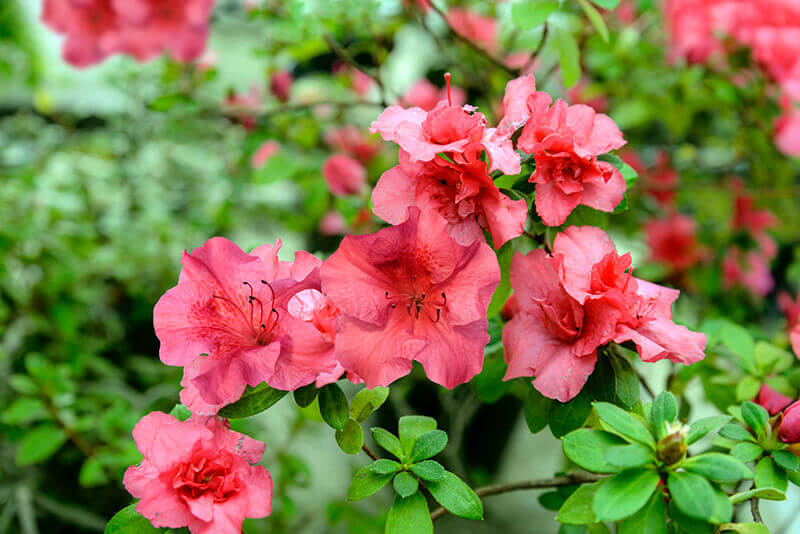
Often referred to as “red tree”, the Rhododendrons are specific types of evergreen plants that have woody growth and red flowers. The species can range between a plant and tall evergreen tree depending on the hardiness zone. A dwarf rhododendron can reach only 4 inches tall. The trees can be 40 feet tall and can have evergreen leaves that are thick. There are some that are deciduous and their flowers may or may not have a scent and are shaped as a funnel. There are a multitude of colors such as blue, scarlet, white, pink, yellow, and purple.
[wp-faq-schema title=”Frequently Asked Questions about Evergreen Trees” accordion=1]Everything You Wanted to Know about Different Types of Evergreen Trees
There are many different types of evergreen trees in the world. They all are capable of providing some sort of significant benefit to your home’s landscaping or garden. Whether you are looking for a nice shade bush, a hedge, or the ability to block the wind, incorporating an evergreen is able to offer you with what your home needs. Hopefully, what we shared with you about types of evergreen trees above, will allow you to enjoy and come to appreciate the evergreen a lot more as you come across them.


